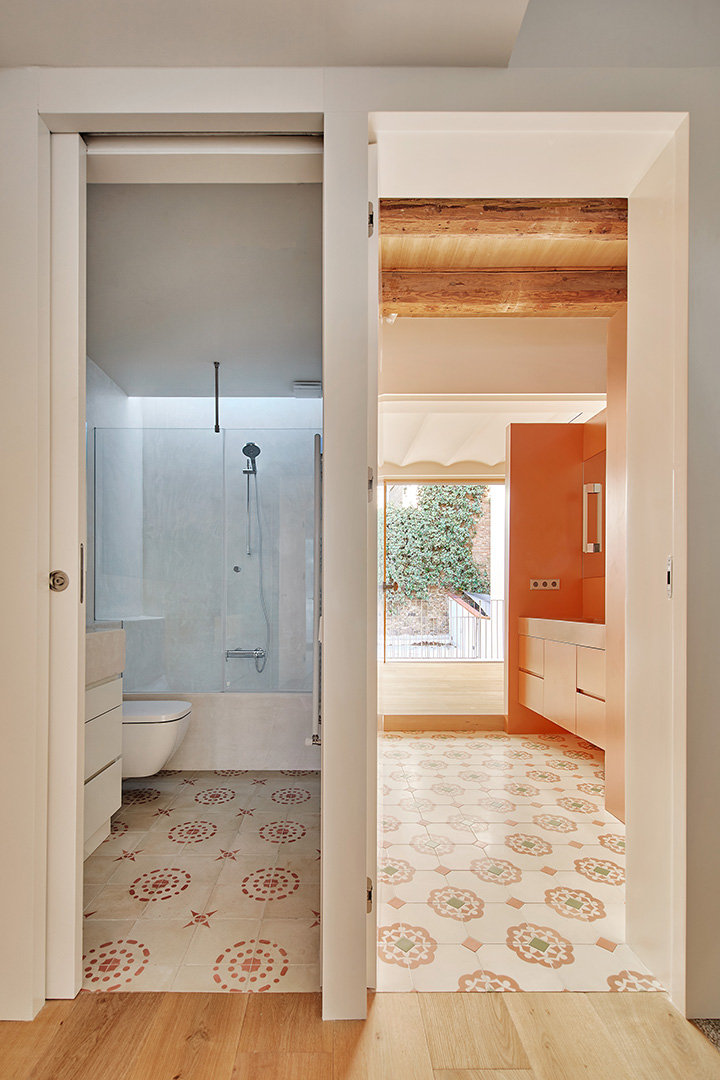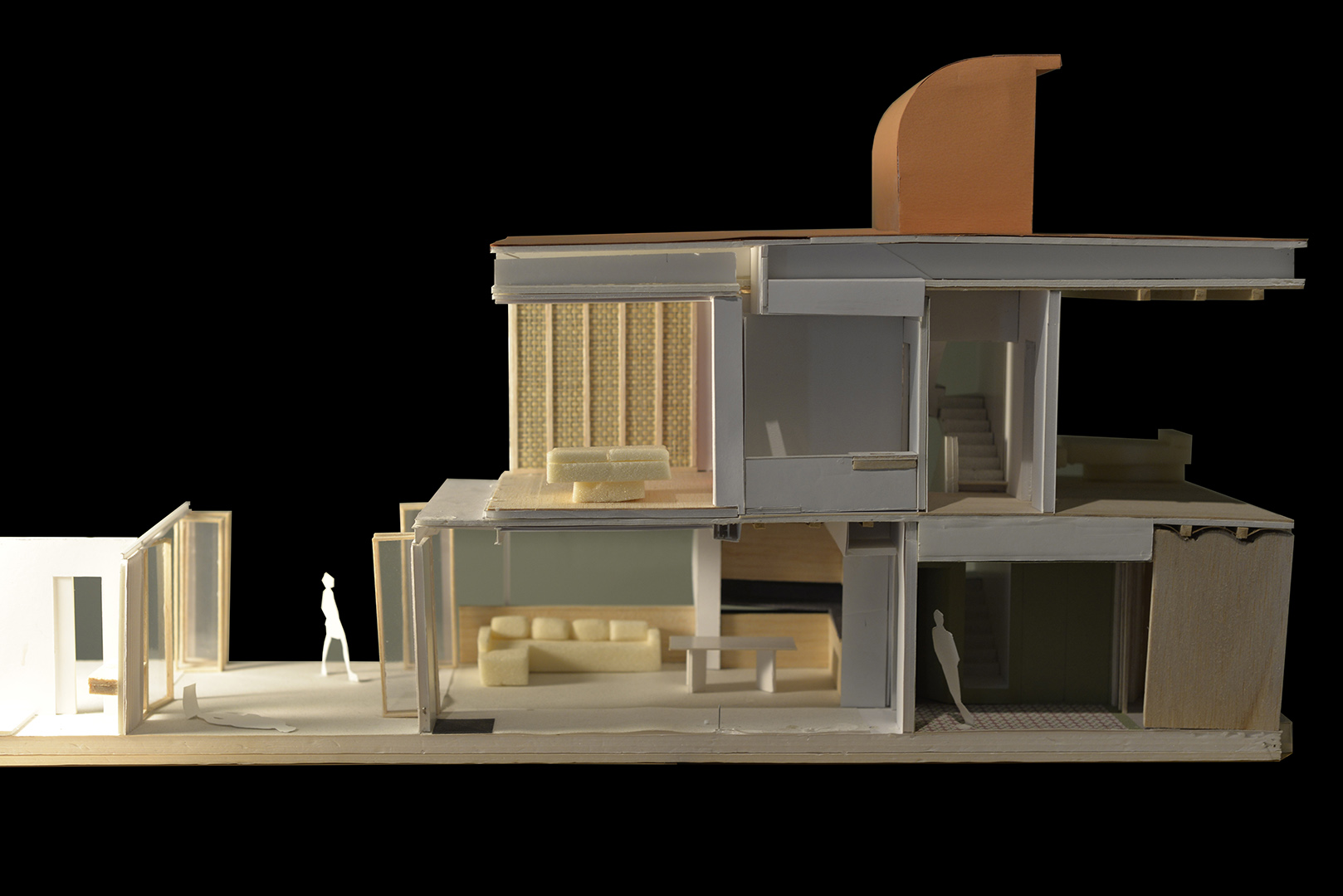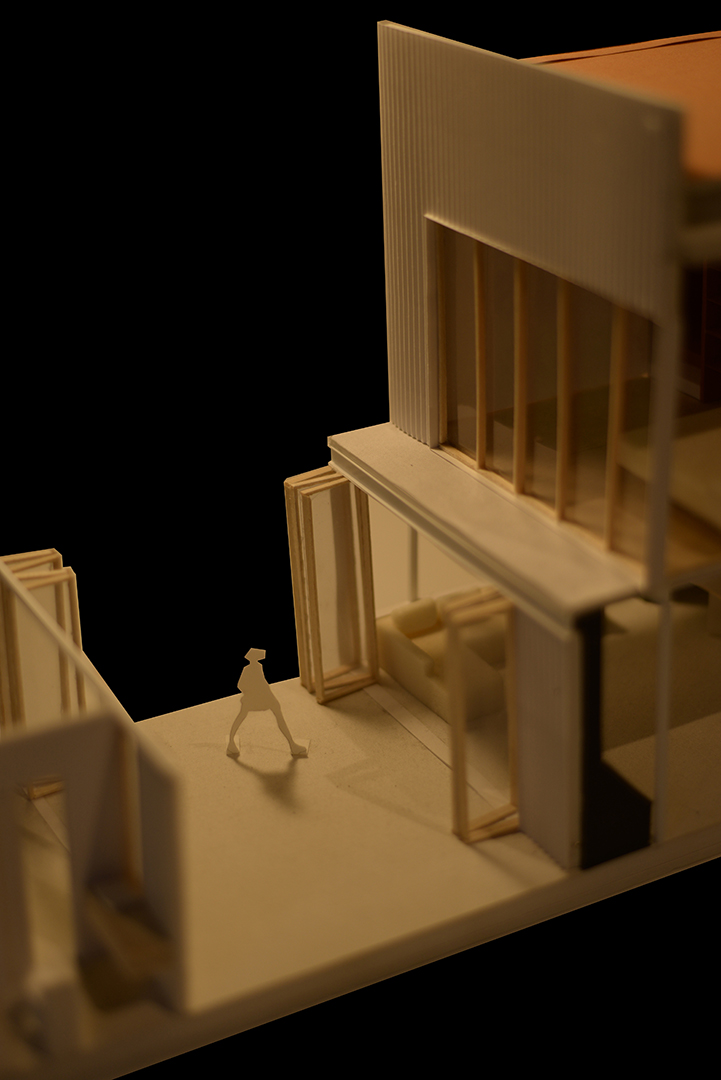We are located in the old town of Sarria, Barcelona, in a house between party walls, full of history, Miquel, an 80-year-old man lives alone after years of living with his wife’s entire family. The family home was acquired in the late 1960s and grew through expansion at the same rate as the family. Already lacking life, Miquel decides to sell it. The new buyers are a family from the area, who value the qualities of a quiet and familiar neighbourhood and the original construction characteristics of the property.
MIQ, short for Miquel, is a comprehensive rehabilitation of a single-family house between party walls. The original wealth of the house is more than remarkable, the reddish, tile and green tones predominate, with hydraulic floors, brick and stone walls with Catalan volta ceilings, upon reaching the back patio, a wild nature surrounds you and reveals the small post-study. This constructive wealth is the source of inspiration for the project.
September Architecture feeds on this original wealth and adapts it to new needs and uses. Enhancing the superposition of styles, which allows the history, the spirit of the home and some of its construction details to be preserved and transformed into a new reality. The proposal is a balance between the new needs of housing and the recovery of existing inheritance. Something like elevating the wear and tear of the old home to become a historical asset.
The result proposes a house with three bedrooms, a living-dining room with kitchen and a study at the rear of the backyard. The original staircase is respected, but the exit to the roof is remade, executing a roof formed by a large isolated Catalan double turn and an opening facing south-west. In this way, the project turns the staircase into a light well in winter and a ventilation chimney in summer, where the adjustable slats control the solar incidence. The main room is endowed with a defragmented bathroom with walls that do not reach the ceiling, thus allowing cross ventilation through the staircase and the entrance of light at both ends of the room. Finally, a large sliding door closes the suite and gives access to a balcony that faces the backyard.
On the ground floor is the living-dining room and open kitchen, to enhance the spaciousness of the spaces and the relationship between interior and exterior, this room is the only one next to the staircase that is dressed in white, the interior flooring and exteriors merge into one and the balcony doors to the patio and study fold out, allowing the interior and exterior to be unified in a single space.
The image of the house from the street is a picturesque two-storey facade, covered in pastel shades and wood, which coexists peacefully with its adjacent buildings. On the contrary, the rear façade is made up of large openings, a white corrugated sheet skin that contrasts with the woodwork and exposed elements of the installations. Therefore, a contrast is created that reveals the transforming will of design.
The main entrance to the house is through an oak-lined hall, the original hydraulic floors are recovered and, if necessary, are reissued with the Huguet factory in Mallorca, which manages to imitate the original designs. The walls take on the colour tones of the hydraulic parts, green in the distributor, deep reddish in the courtesy toilet and terracotta salmon for the bathroom of the suite. The tailored design of the sinks with the same materials and colours is studied in-depth, as well as the large hydraulic parts that line the walls of the shower. The light invades all the rooms, including the general bathroom on the first floor, which is located in an interior area and that through a Spectralight tube, captures natural light up to the skylight above the bathtub.
The rest of the spaces recover the original ceilings with wooden and metal beams, showing the construction phases of the building. Thus, the rooms are covered with parquet floors, while the original stone and brick walls dress the living room, the head of the suite, the patio and the study. The exterior metal staircase, designed in such a way that it acquires great lightness, ascends to the walkable roof of the studio, thus taking advantage of all the exterior spaces.
The design of the house aims to return the wild character of the vegetation, for this a planter and a metal structure are created that arise from the railing of the external staircase and that will allow the recovery of the existing vegetation.




















